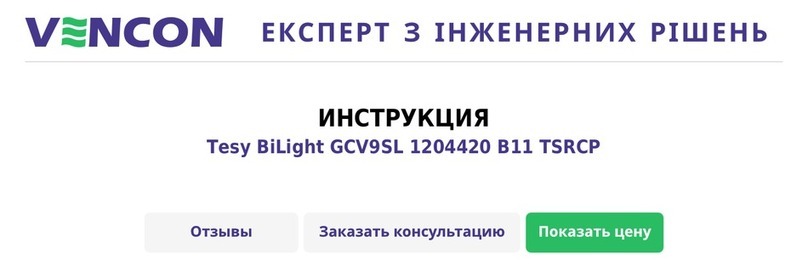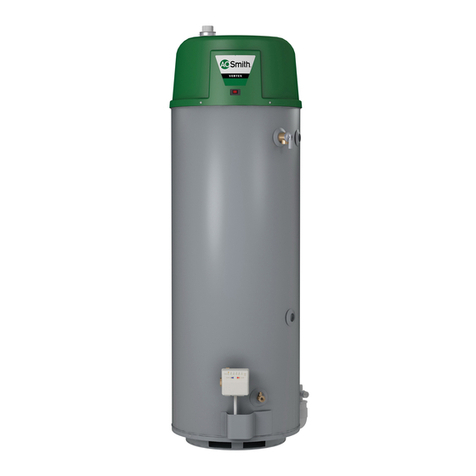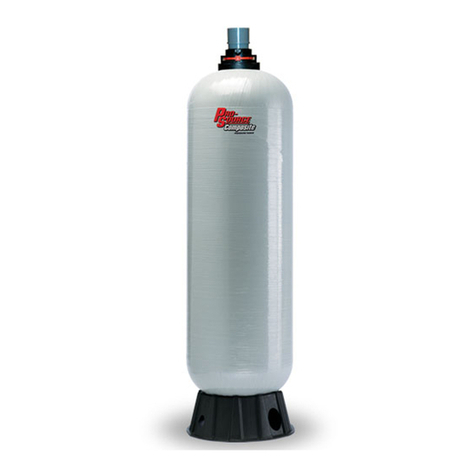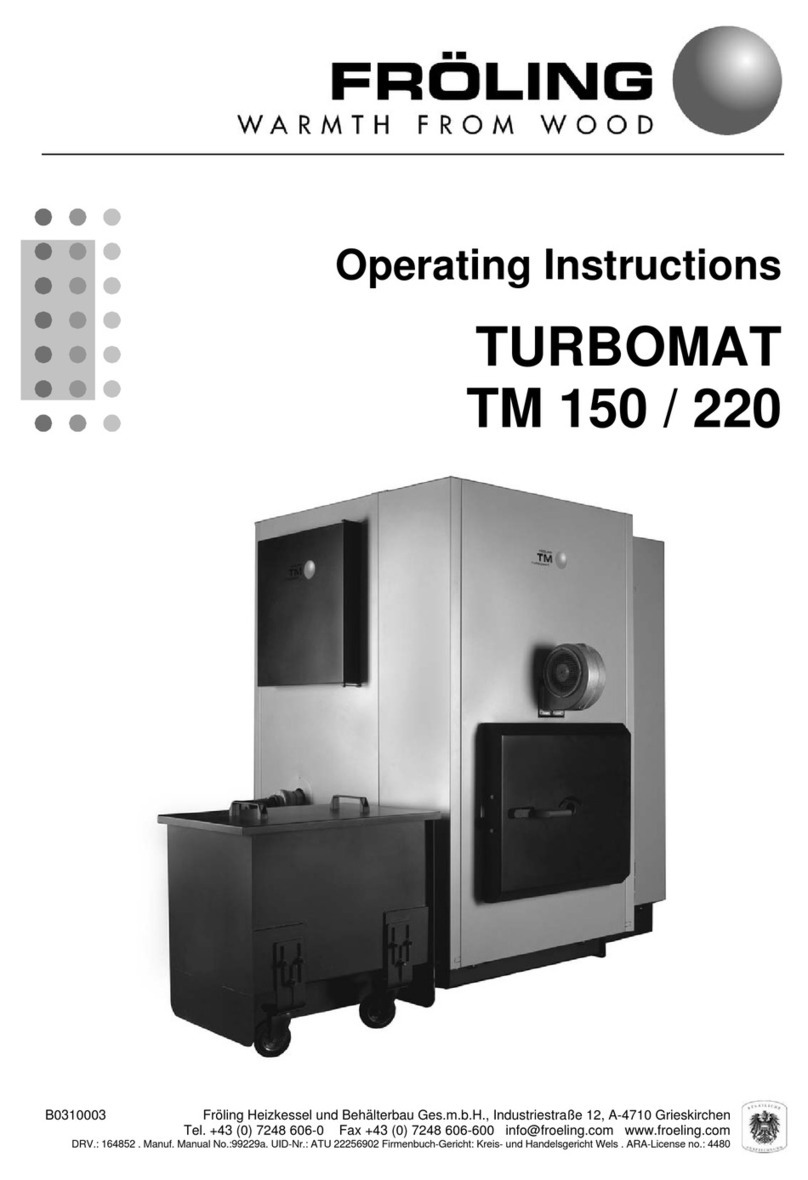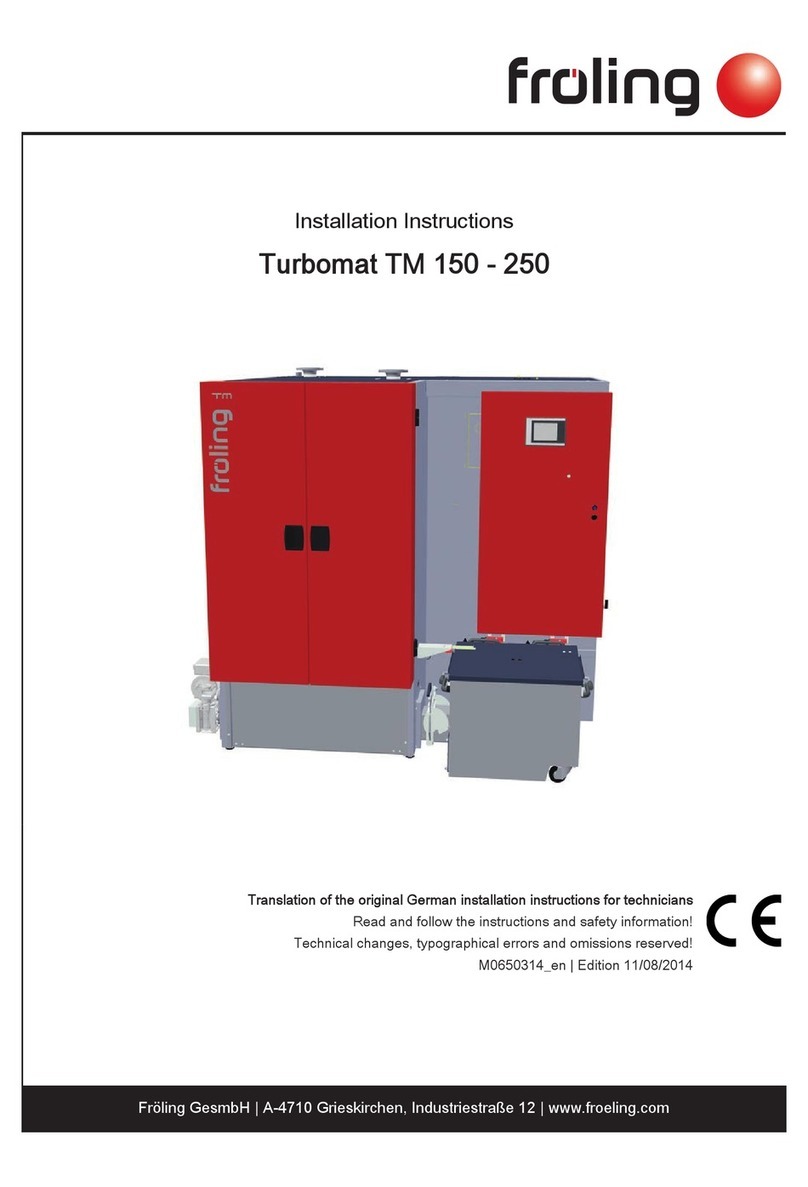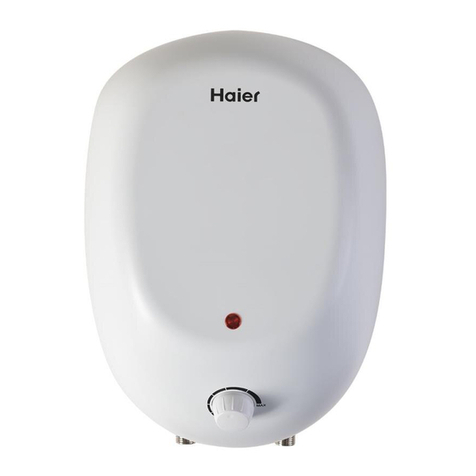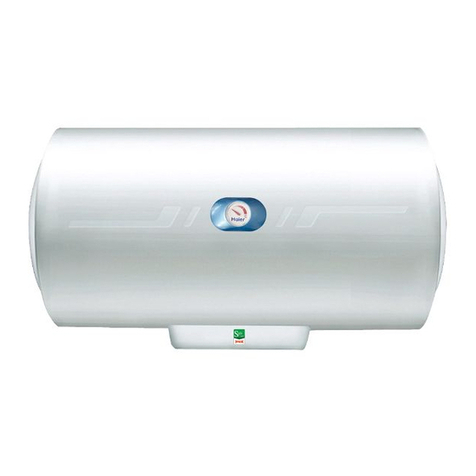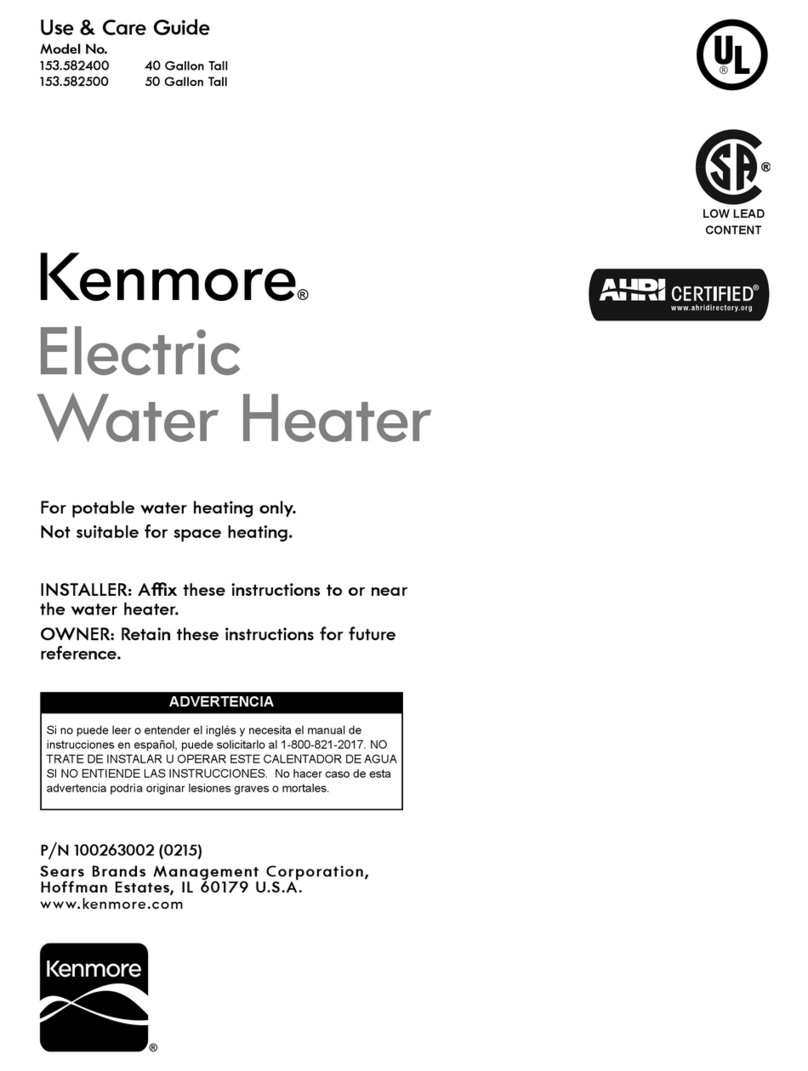2.3.3 Location
The water heater must be installed vertically and should be installed in a
clean, dry location as close as practical to the boiler or the heat source.
Long hot water lines should be insulated to conserve water and energy.
The water heater and water lines should be protected from exposure to
freezing temperatures.
All models can be installed on combustible floors and in alcoves.
Minimum clearance from combustible construction is 0 inches on all
sides. A minimum 3 inch clearance on both sides and in the rear and a
minimum 24 inch clearance in front and on top should be available for
adequate inspection and servicing.
This unit must be placed where leakage from the relief valve, leakage
from the related piping, or leakage from the tank or connections, will
not result in damage to the surrounding areas, or to the lower floors of
the building. A water heater should always be located in an area with a
floor drain or installed in a drain pan suitable for waterheaters. The
manufacturer or supplier shall not be held liable for any such water
damage.
2.3.4 Plumbing
It is mandatory that all plumbing is done in accordance with all local and
state plumbing codes, or warranty will be voided. It is also necessary on
all mechanical connections, that you use both thread tape and pipe
dope.
The manufacturer’s warranty does not cover any damage or defect
caused by installation or attachment or use of any special attachment
other than those authorized by the manufacturer into, onto, or in
conjunction with the water heater. The use of such unauthorized devices
may shorten the life of the water heater and may endanger life and
property. The manufacturer disclaims any responsibility for such loss or
injury resulting from the use of such unauthorized devices.
WHEN FILLING THE TANK, MAKE SURE THAT YOU OPEN THE HOTWATER
TAP TO RELEASE AIR IN THE TANK AND PIPING.
The boiler supply connection of the tank is to be connected to the "HOT
OUTLET" side of the boiler. The boiler return connection of the tank is to
be connected to the inlet of the circulator, the outlet of the circulator to
the return connection of the boiler. Be sure that the arrow on the
circulator is facing toward the flow direction. The return(s) from heating
loop(s) should have a flow check or swing check valve installed before
the return pipe from the tank.
In a steam boiler, the tank supply must be connected to the boiler, well
below the minimum water level. A strainer and a drain valve should be
installed at the boiler for periodic draining of scale and sludge. Banging
and steam bound traps will occur if the boiler water supplied to heat
exchange has steam, or is slightly above the low water cut-out.
Precautions should be taken so that the boiler return is above the boiler
manufacturer’s lowest recommended temperature. Most hot water
heating systems use standard, non-condensing boilers (cast iron or
steel), which must be operated above 140°F in order to prevent the
corrosion that is associated with flue gas condensation.
